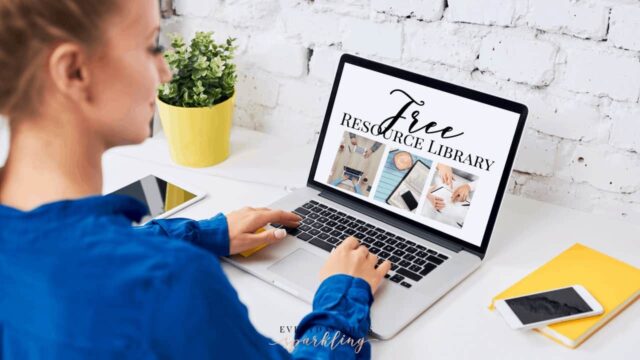A resource library is an invaluable addition to any website, offering visitors a curated collection of helpful content, tools, and information. It can enhance user experience, position your brand as an authority in your niche, and drive traffic. If you’re ready to create a resource library on your website, here’s a step-by-step guide to help you get started.

Table of Contents
Toggle1. Define Your Goals
Before diving into the creation of your resource library, it’s essential to define its purpose. Ask yourself:
- What do you want to achieve with this library?
- Are you looking to educate your audience, generate leads, or provide tools to enhance user experience?
Having clear goals will guide the selection of resources and the overall structure of your library.
2. Identify Your Target Audience
Understanding your target audience is crucial for curating valuable resources. Consider the following:
- Who are your visitors? Determine their demographics, interests, and needs.
- What challenges do they face? Identify pain points and areas where they seek solutions.
By aligning your resource library with your audience’s needs, you can create content that resonates and encourages engagement.
3. Choose the Right Format for Resources
Your resource library can include a variety of content formats, depending on what will be most beneficial for your audience. Consider incorporating:
- E-books and Guides: In-depth resources that provide comprehensive information on a specific topic.
- Webinars and Videos: Engaging visual content that can explain complex concepts more clearly.
- Checklists and Templates: Practical tools that visitors can use to implement solutions easily.
- Articles and Blog Posts: Informative written content that addresses common questions and topics in your industry.
- Infographics: Visually appealing graphics that summarize information in an easy-to-digest format.
Mixing different formats can cater to various learning styles and preferences.
4. Curate and Organize Your Content
Once you’ve identified the types of resources you want to include, it’s time to curate and organize them effectively:
- Categorize Resources: Group similar resources together to make it easier for users to find what they need. For example, you could create categories for e-books, video tutorials, and blog posts.
- Create a Search Functionality: Implement a search bar to allow users to quickly locate specific resources.
- Use Tags and Filters: Utilize tags to help visitors sort through resources based on specific topics or keywords.
An organized library will enhance user experience and encourage visitors to explore more content.
5. Design an Accessible Layout
The design of your resource library plays a crucial role in its effectiveness. Keep these design principles in mind:
- User-Friendly Navigation: Ensure that users can easily navigate your library. Use clear headings, breadcrumbs, and intuitive menus.
- Visual Appeal: Use appealing visuals and consistent branding to create a cohesive look. Incorporate images, icons, and color schemes that reflect your brand identity.
- Mobile Responsiveness: Ensure your resource library is mobile-friendly, as many users will access it on their phones or tablets.
A well-designed layout can significantly improve user engagement and retention.
6. Include Calls to Action (CTAs)
Encourage users to take action by including strategic CTAs throughout your resource library. Here are some ideas:
- Download Buttons: For e-books, guides, and templates, provide clear download buttons that are easy to find.
- Newsletter Sign-Ups: Encourage visitors to subscribe to your newsletter for updates on new resources or exclusive content.
- Social Sharing Options: Include social media sharing buttons so users can easily share valuable resources with their networks.
Effective CTAs can help you capture leads and increase visibility for your resources.
7. Promote Your Resource Library
Once your resource library is live, it’s time to promote it to maximize its reach:
- Leverage Social Media: Share your resources on social media platforms to drive traffic. Create engaging posts that highlight specific resources.
- Incorporate SEO Best Practices: Optimize your resource library for search engines by using relevant keywords, meta descriptions, and alt text for images.
- Feature Resources in Your Blog: Reference your library in related blog posts, linking back to relevant resources to drive traffic.
Regular promotion will keep your resource library visible and encourage users to return for new content.
8. Regularly Update Your Library
To maintain the value of your resource library, make it a priority to regularly update and refresh the content. Consider:
- Adding New Resources: Continuously add new materials to keep your library relevant and engaging.
- Reviewing Existing Content: Periodically review and update outdated resources to ensure accuracy and relevance.
- Engaging User Feedback: Encourage users to provide feedback on what resources they find most useful or what topics they want to see covered.
Regular updates will demonstrate your commitment to providing valuable content and keep visitors returning.
Conclusion
Creating a resource library on your website can significantly enhance user experience, establish your brand as an industry authority, and drive traffic to your online presence. By following these steps and continually optimizing your library, you can provide valuable content that meets your audience’s needs and keeps them engaged. Start today and watch your resource library become a vital part of your website’s success!


No responses yet